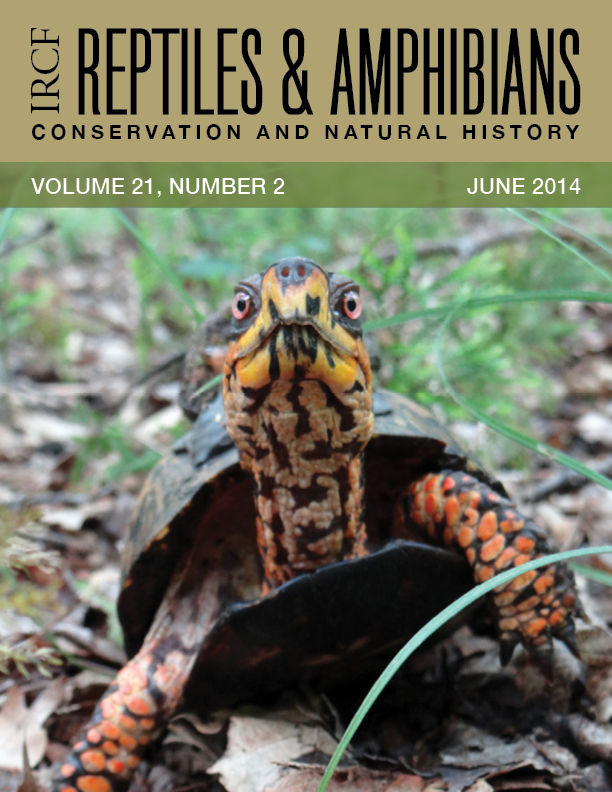Keeping and breeding the Algerian Whipsnake Hemorrhois algirus (Jan, 1863) in captivity
DOI:
https://doi.org/10.17161/randa.v21i2.13996Abstract
I describe the first instance off successful captive propagation of Algerian Whipsnakes (Hemorrhois algurus) in 2012–2013. In 2010–2012, a juvenile male and an adult pair were maintained separately. After two months of hibernation (October–December 2012) at 10–16 °C, the adults were introduced and subsequently housed together. The female laid six eggs on 23 March. They were incubated at 27–29 °C and one young hatched on 25 May, but died after 11 days during the first shed. The remaining eggs were dissected and found to contain dead embryos. On 1 June 2013, the female laid a second clutch of five eggs. They were incubated at 25–27 °C at night and 26–30 °C during the day. The young hatched between 3 and 15 August (exact dates unknown). After the first shed, they started to feed on small lizards, and later began to accept newborn mice.
Downloads
Published
Issue
Section
License
Copyright is held by the authors. Articles in R&A are made available under a Creative Commons Attribution-NonCommercial 4.0 International license.

